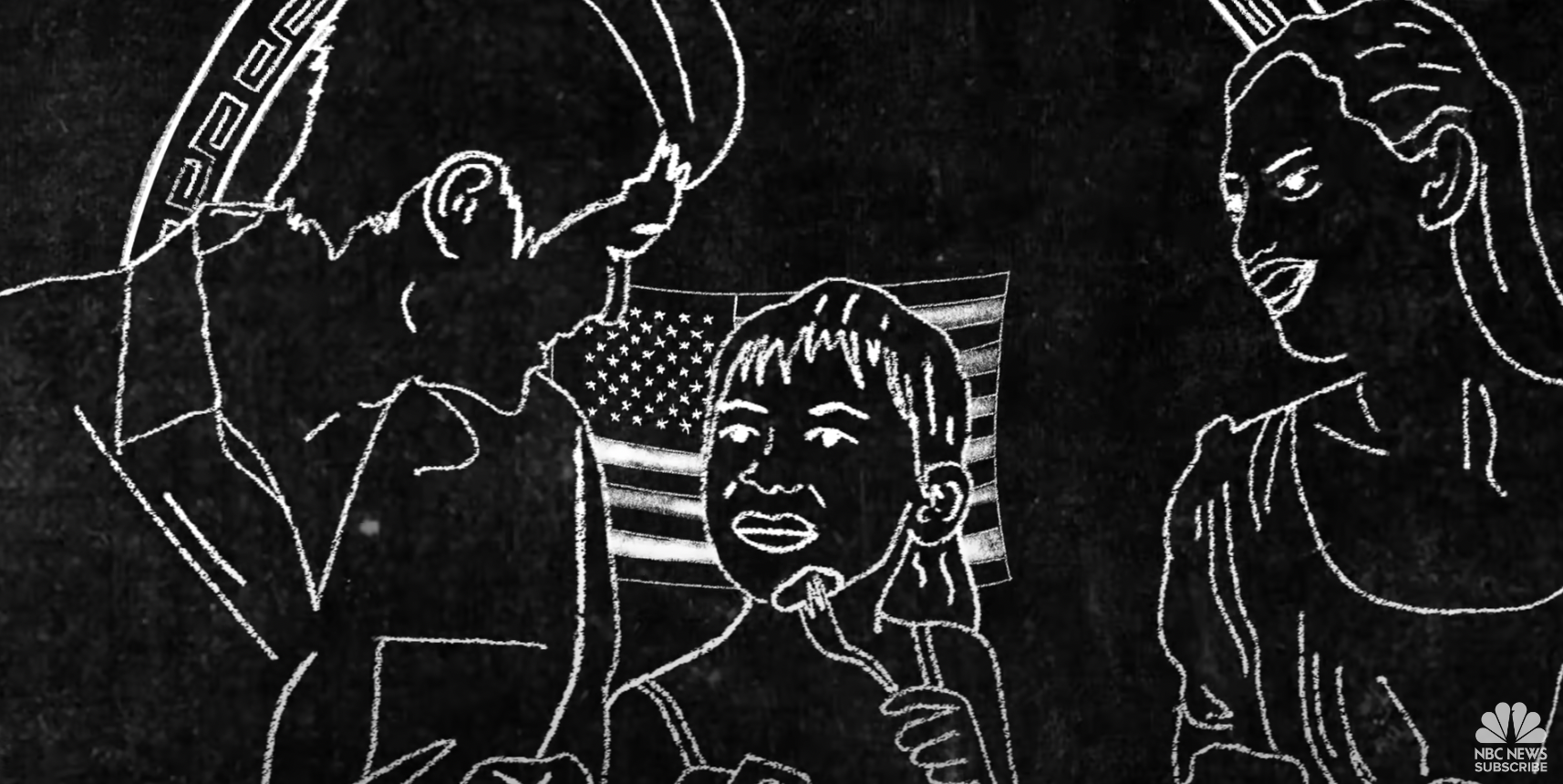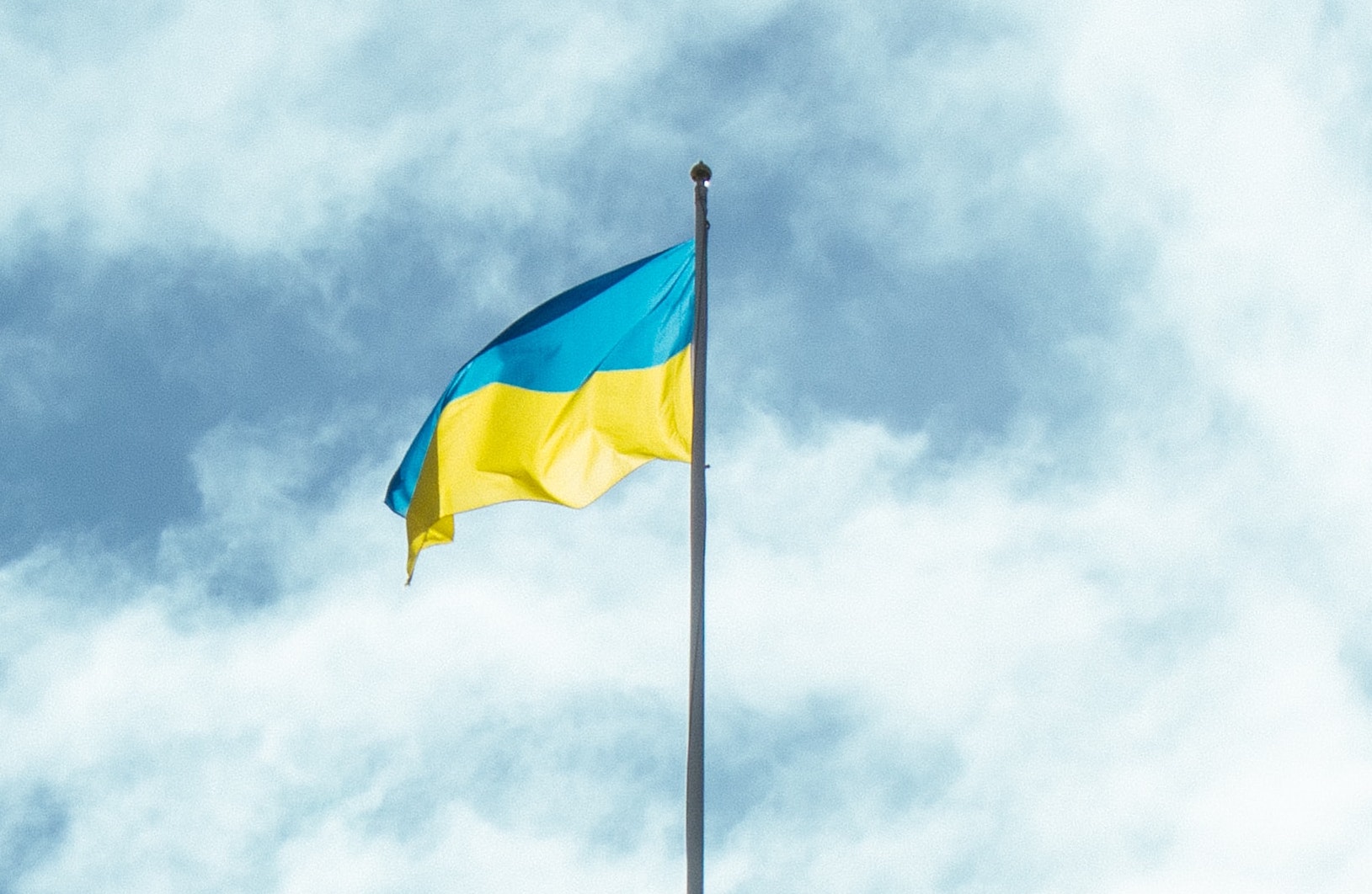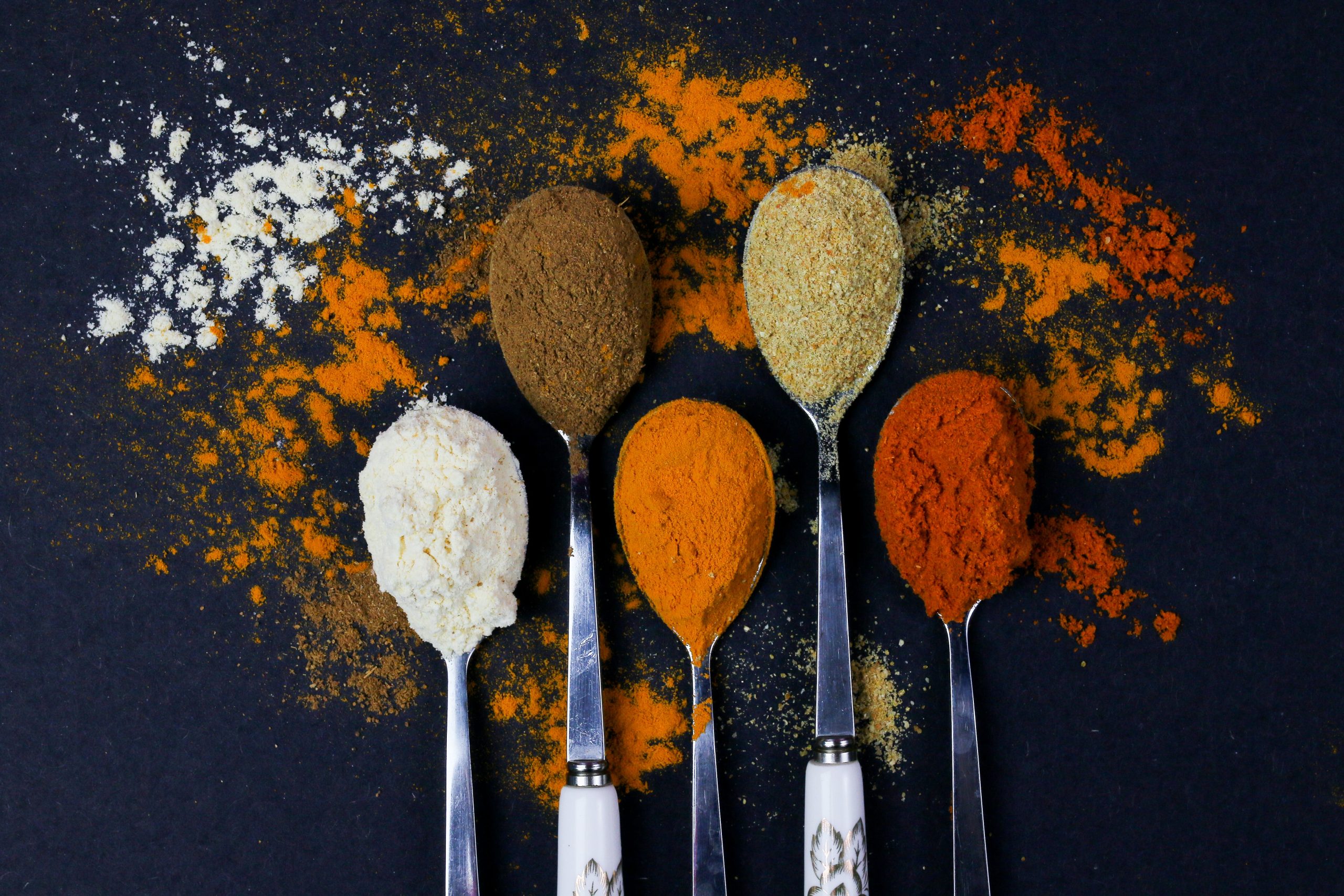Books & Culture
My Jewish Father’s Chinese Food Was Legendary
“Millie Chan’s Kosher Chinese Cookbook” is essential to my understanding of who my father was

The cover of the cookbook shows a bamboo basket laden with bell peppers, asparagus, and broccoli. Surrounding it on the table are scallions, ginger, dried mushrooms, peapods, a red onion. A fish, an eggroll, some dumplings, a pair of chopsticks. In the background, a white ceramic soup tureen waits coquettishly to be opened. A long, seductive purple eggplant and buxom bunch of bok choy lean against a garden window, or maybe it’s a wall with flowery wallpaper. It’s such abundant imagery, you would never notice what’s missing: shellfish, for example, and pork.
None of the items on the book jacket are conspicuously kosher, nor does the design suggest so-called Asian fusion. Today, an equivalent cookbook might be titled Jew-ish Chinese and include dishes like Mission Chinese’s famous kung pao pastrami. The book is Millie Chan’s Kosher Chinese Cookbook, or Millie Chan, as it’s known in my family. It predates this trend, but encapsulates an older American culinary tradition: the Jewish embrace of Chinese food.
We love [Chinese food] for the same reason everyone does: it’s fucking delicious.
I inherited my copy of Millie Chan from my dad, John, who borrowed it from our public library in Shaker Heights, Ohio when I was a child and never gave it back, and who died suddenly in 2021. My dad was an incredible cook, entirely self-taught and with astonishing improvisatory talent; he was equally at home barbecuing ribs, deep-frying cod, and baking cardamom poundcake. But his Chinese food was legendary, earning him acclaim from the friends my brother and I brought home, and from our extended family, who were treated to feasts that took three days to prepare. Our admiration was enriched by a keen sense of irony: Who would think a Jew from Cleveland could cook such good Chinese food!?
“Why do Jews love Chinese food?” is a silly question. We love it for the same reason everyone does: it’s fucking delicious. The other questions—where, when, and how American Jews started eating Chinese food—are more interesting. The cross-cultural encounter began in New York’s Lower East Side at the turn of the twentieth century, where Eastern European Jewish and Chinese populations were surging. The neighborhood’s other significant immigrant groups, from Italy, Ireland, and Germany, established restaurants that served their own communities. Like any exilic gathering places, these businesses tended to reflect the communities’ religious practices; a 2021 article in the Forward, a still-extant publication that began as a Yiddish newspaper in late nineteenth-century New York, notes that Italian restaurants at the time often incorporated Christian iconography into their décor. The restaurants may have also expressed or enforced antisemitic prejudices.
The Chinese and Jewish communities were alike in how they differed critically from the other immigrant groups: both communities were non-Christian. Jews’ practice of going to Chinese restaurants on Christmas dates from this moment in history: in the milieu of the Lower East Side, Chinese restaurants were the only businesses open that day.
Now, the juicier question is, how did Jews justify eating at treyf, that is, non-kosher restaurants? Kashruth, the Jewish dietary laws, are, basically, as follows:
- Don’t mix meat with dairy.
- No dairy ingredients in the cooking process (can’t sear steak in butter) or dairy served alongside (can’t sprinkle parmesan on spaghetti and meatballs);
- Fish is not meat (hence bagel, cream cheese, and lox).
- You can only eat birds that:
- don’t sing; and
- don’t hunt.
- You can only eat fish that have:
- scales; and
- fins.
- (That means no shellfish).
- You can only eat meat from land animals that:
- have cloven hooves; and
- chew their cud.
- (That means no pork).
We’re off to a good start with Rules 1 and 2. Chinese food is largely dairy-free and as for poultry, chickens and ducks are neither musical nor predatory. It’s when we get into Rules 3 and 4, however, that we have to get a bit…creative.
A new idea emerged under the moniker “safe treyf.” While the Jewish immigrants to New York would never order twice-cooked pork or—God forbid!—shrimp in lobster sauce, they might look the other way on dishes where the offending ingredient was finely minced or otherwise concealed such that they weren’t looking directly at it. In his book A Kosher Christmas, Rabbi Joshua Eli Plaut reminds us how much wontons resemble kreplach, traditional Ashkenazi dumplings which are typically served in soup. In what was essentially an act of cognitive dissonance, Plaut says that “Chinese food eased the transition from kosher to acceptable non-kosher eating.” Or, as rapper Action Bronson put it in his contribution to the book The 100 Most Jewish Foods, “In New York City, Chinese food is as Jewish as matzo ball soup.”
I grew up about a century after this practice emerged, and while my family didn’t go in for safe treyf, we did have another workaround: keeping kosher in the house. Maintaining a kosher kitchen meant that we bought only kosher meat, never combined meat with dairy, and had separate flatware and cutlery for milchig and fleishig (dairy and meat, respectively, plus a whole additional set for Passover, when a special set of rules kicks in). Out in the world, however, all bets were off. At pizzerias, we ordered sausage pies. On vacation in Florida, I gorged myself on shrimp cocktail. And in Chinese restaurants, we went ham.
At pizzerias, we ordered sausage pies. On vacation in Florida, I gorged myself on shrimp cocktail.
Keeping a kosher home was important to my dad. My mom is a second-generation American Jew, the product of an assimilated family, raised on cheeseburgers. But my father’s parents were European immigrants, Holocaust survivors. My babi and zayde met after liberation, in a displaced persons camp in Germany, and it was there that their first child, my aunt, was born—conceived, I think, more out of desperation than love. Their common language was Yiddish and, when they settled in Cleveland, their default religious practice was Orthodox Judaism.
In his book The Holocaust in American Life, the historian Peter Novick addresses himself to a paradox that surprised the hell out of me when I first learned about it:
Generally speaking, historical events are most talked about shortly after their occurrence, then they gradually move to the margin of consciousness … With the Holocaust the rhythm has been very different: hardly talked about for the first twenty years or so after World War II; then, from the 1970s on, becoming ever more central in American public discourse – particularly, of course, among Jews, but also in the culture at large.
We didn’t start to have the memorials, museums, movies—all that public evidence of events deemed significant—until the late 1960s; studies and commemorations of the Holocaust have increased exponentially since then. (Novick’s book came out in 1999, a few years after Schindler’s List and then Life is Beautiful won Best Picture at the Academy Awards.) Novick offers a matrix of explanations for the initial public silence, including political realignments in the Cold War, part of which was an unwelcome association of Jews with communism, and the lifecycle of collective memory. He also acknowledges that we don’t really know what people—survivors, their children, and those spared the horrors—thought, felt, or said amongst themselves in private.
My dad told me what he knew about his parents’ experiences, but for the most part I learned about it in school like everyone else.
What I know is this: we never talked about it in my family. My grandparents never “shared their stories”; they weren’t the type of mentally stable, financially successful survivors who, by the time of my childhood in the 1990s, were invited to speak and show their tattoos at school assemblies for Holocaust Memorial Day (established in the United States in 1979). A friend I grew up with recently joked that, when you’re a Jewish kid in America, they teach you about the Holocaust as soon as you can spell your own name. My dad told me what he knew about his parents’ experiences, but for the most part I learned about it in school like everyone else.
In the aftermath of the war, my babi was a broken woman, young and suddenly the mother to two children in an unfamiliar country. What she went through in the camps annihilated her capacity to love. And so, among greater tragedies, she was basically a terrible cook. In her kitchen, she made pitiful attempts to recreate the food she knew, the humble dishes of her native Subcarpathian Rus, a region no longer designated on any map. Misguided and largely miserable were her home, her family, and her food: my dad was raised in a household of both emotional and gustatory famine.
I have no idea where or when my dad learned to cook, and now that he is gone, I regret that I never asked him. I know that, his whole life, he was curious and smart, hungry for culture. When I was growing up, my mom was always the primary breadwinner, but my dad was the primary cook. (She’ll be mad at me for saying this, but it’s the truth: my mom’s cooking repertoire is limited to about five dishes—all of which we love, Ma, honest!). In the early days of their relationship, my future-dad wooed my future-mom with elaborate meals prepared in a modest apartment where his kitchen consisted of a hot plate. According to family legend, they had their first fight when he came to her place to cook dinner and she didn’t have any salt. So throughout my childhood, although it was my mom’s paycheck that put food on the table, it was my dad’s cooking that made you want to pull up a seat. And Millie Chan, borrowed from the library, likely on a whim, opened up the world to him.
Millie Chan, the Millie Chan, was born in San Antonio, Texas in 1933. When she was a child, her parents owned grocery stores and a restaurant that catered to the large Chinese-American community there. In the early 1960s, she moved to New York because her husband got a job working for I. M. Pei, who was a family friend. There, Millie started offering Chinese cooking classes, and her Jewish students taught her about kashruth. The Kosher Chinese Cookbook, which came out in 1990, is her only publication.
It encouraged one of his favorite hobbies: sourcing ingredients from the many terrific greengrocers and neighborhood markets around Cleveland.
Millie was interviewed for the Houston Asian American Archive oral history project in August 2021, just three months after my dad died. In the interview she says, “And—oh, meanwhile, I did write this cookbook, which also was good for me to have done, about kosher Chinese because I think I’m the only Chinese person who has ever written about kosher cooking. And so that’s kind of interesting.” Millie Chan—not Jewish. But she sure sounds like one of us.
Kosher Chinese home cooking became my dad’s greatest legacy, and Millie Chan turned out to be the on-ramp he needed toward this. It encouraged one of his favorite hobbies: sourcing ingredients from the many terrific greengrocers and neighborhood markets around Cleveland. Sriracha was a household staple for us 15 years before it became ubiquitous: my dad called it “Vietnamese,” no noun, and bought it in quantities that could supply a small restaurant. Millie Chan helped him refine and expand on his already impressive knife-skills. Bee Wilson’s chapter on knives in her book Consider the Fork includes this paean to the tou, the Chinese cleaver:
With this single knife, Chinese cooks produce a far wider range of cutting shapes than the dicing, julienning, and so on produced by the many knives of French cuisine. A tou can create silken threads (8 cm long and very thin), silver-needle silken threads (even thinner), horse ears (3 cm cut on a steep angle), cubes, strips, and slices, to name but a few.
He made a deeply savory beef with leeks that simply could not be improved on.
My dad struggled with severe depression for his entire adult life, perhaps an inevitable outcome of his upbringing; his happiest moments were in the kitchen, cleaver in hand, cutting mountains of vegetables. He described this activity with a word I’ve never encountered in any food writing: “hocking.” It’s Yiddish, for chopping. Millie Chan allowed my dad to feed his family, a generally happy bunch who took pleasure in good food and each other’s company. It let him create a household of emotional and gastronomic bounty.
Just as Chinese restaurants eased the transition out of religious observance for New York’s Jews, so did my dad’s Chinese cooking outlast my family’s commitment to keeping kosher. Oddly enough, it was because of September 11th, which caused my ever-pedantic father to declare organized religion to be the greatest killer in the world. As a result of this revelation, he dispensed with kashruth in our home. I was in tenth grade. During the Millie Chan era, he loved to say that anything you did with pork, you could do with turkey or veal. But then, by late 2001, pork, shrimp, and scallops quickly appeared in our refrigerator. Still, it was everything he learned from his first cookbook teacher—just applied more broadly. The same local grocery stores, the same cooking techniques, the same feelings of delight and pride in the creations coming from his kitchen.
Some of his kosher dishes stayed in the repertoire. For Thanksgiving—which we celebrated with our extended family, many of whom are observant and keep kosher—he made turkey eggrolls. A perfect non-dairy appetizer, they immediately became everyone’s favorite dish on the holiday table, and, eventually, an absolute requirement for the festive meal. He made a deeply savory beef with leeks that simply could not be improved on, and he could casually throw together the most satisfying stir-fried vegetables with tofu you’ve ever had. My favorite thing was something he cheekily called Tender Tiny Turkey Balls: meatballs flavored with scallions and ginger, served over stir-fried shredded Napa cabbage and fat, slurpable udon noodles. When I went away to college, I asked him for the recipe via email but was too intimidated to make it myself—it turned out, the meatballs were so tasty because they were deep-fried. But I knew I could always request it when I came home for a visit.
He hallucinated that his hands were full of bread, and he was breaking off chunks and handing them to everyone.
For many years, my dad suffered gastrointestinal ailments that acutely compromised his quality of life. Some Thanksgivings, he wasn’t well enough to come to the dinner, but he’d always send a tray of eggrolls, knowing the family looked forward to them all year. During that time, he refused to alter his indulgent diet, for which I gave him no end of guff. He was convinced, fatalistically I thought, that nothing he tried would make a difference. Or maybe he just thought, as long as we’re alive, let’s really live.
Then, in the spring of 2021, he was diagnosed with lung cancer. It was Stage IV by the time they found it, and he died within a month. How can somebody be sick for so long, and then die so suddenly?
In his last lucid days he talked about literature—Kafka, Brecht—and food. He hallucinated that his hands were full of bread, and he was breaking off chunks and handing them to everyone in the room. When he offered some to the hospice nurse, she refused to play along, explaining impatiently, “There’s nothing there.”
“Take some,” he insisted. “There’s plenty for everyone.”
He had been on disability for a while at that point, a result of his poor physical and mental health. In fact, he’d been unevenly employed my whole life—that’s why he’d had the time to cook those three-day Chinese feasts, and he accordingly had no fortune to leave behind. My material inheritance from him consisted solely of sentimental objects, chief among them Millie Chan, still bearing the telltale stamp from the Shaker Heights Public Library. I also took his wok, deeply and perfectly seasoned. But with time I realized the true wealth I had inherited from him, which I’d had all along: I embody Jewish history, for I am a miracle of survival. My practice of Judaism and expression of Jewishness result from forces larger than myself—politics and social mores—as well as whatever I do or don’t care to uphold. And I show love through food.
Part of mourning my father’s death was acknowledging the loss of my favorite dishes he cooked, which felt like such a trivial thing to get hung up on. But then, a few months later, we faced the first Thanksgiving without him, and one of my cousins brought a package of kosher frozen eggrolls. The tradition is enshrined now, and the very youngest generation of my family will grow up eating eggrolls on Thanksgiving without ever meeting the man who started it. I wonder, in a few years, will they be puzzled by the presence of this appetizer? Or will they chalk it up to Jews’ love of Chinese food?
I admit that I wept, literally wept, thinking that I’d never again taste those tender tiny meatballs.
But I realized, he didn’t invent that recipe, it’s Millie Chan. I flipped through my copy, his copy, until I found it: Sweet-and-Sour Turkey Balls. But Millie doesn’t include the noodles, which absolutely make the dish; those were my dad’s touch. And then I remembered that college email exchange, when he passed the recipe on to me. The recipe I now pass, in his words, on to you. I’ll leave it to you to puzzle out what are the requirements for how the recipe works versus what were just my dad’s preferences (and typos). He innovated the noodles after all. And I’m starting to adapt it, too. The last time I cooked these meatballs, I was cooking for someone I love, and I went with the best-looking meat I could find at my farmers’ market: pork. It still tasted like home.
John Weil’s Tender Tiny Turkey Balls
Alright. (with my refinements) Mix marinade
- ½ cup minced scallions (practically an entire brunch)
- 1 tsp. minced ginger
- 2 TBSP light soy sauce
- 1 TBSP corn oil
- 1 tsp. kosher salt
- 1 very big egg
- 2 TBSP warm water
Mix all that stuff up in a big steel bowl with a whisk. Then plop in one lb of ground turkey and, stirring in one direction, mix it until you have uniform goop. (It will seem looser than it should)
Now shred a pound or more of Chinese cabbage. Throw a couple tablespoons corn or peanut oil in a wok and get it good and hot. And the cabbage and toss until it is entirely coated by oil. Then throw in ½ tsp. salt and ¼ tsp. sugar and toss. Cook until cabbage wilts. Pull out of wok and set aside.
Now, with your hands, scoop out walnut-sized balls of the turkey mixture and arrange them on a platter for deep frying. Heat t 1 ½ to 2 cups corn or peanut oil in a hot wok until it is super hot. Getting it to the right temp will take minutes. You’ll know its hot enough when you touch a bit of a meatball to the surface and it starts to bubble immediately.
Drop the balls, by hand into the hot oil. drop in as many as will float to the top at one time. Fry for a couple minutes, periodically turn them in the oil. Put a sieve over a bowl and drop the fried balls into the sieve for the oil to drain off. Repeat until all those bad boys are fried up.
Oh, and I forgot. Udon noodles are my own touch, but essential. I like the round fat ones. Cook up about a pound (don’t add salt) and combine with the cabbage in a large serving dish. Now add the cooked meatballs and
PREPARE THE SAUCE
- Add 2 TBSP of the warm frying oil into a small saucepan. Now add
- 4 TBSP sugar
- 3 TBSP white vinegar
- 2 TBSP soy sauce
- 1 tsp sesame oil (must be “Kadoya” brand)
- 1 TBSP cornstarch dissolved into ⅔ cup of water
Heat this mixture up over moderate heat, STIRRING CONSTANTLY, until sauce thickens and turns translucent. dump sauce over cabbage, noodles and balls. EH VOILA!!








